Two days in the Spreewald – for us that meant two days of feasting and enjoying. We tried a few delicacies in the Spreewald and are thrilled with the diverse food in the Spreewald.
Cottbus Baumkuchen Manufactory
The insider tip for all Baumkuchen fans is the Cottbusser Baumkuchen Manufaktur. We watched the show baking here and now I know how much work and love goes into the products.
The “Baumkuchen Backofen” is already preheated when we enter the bakery at Mühlenstraße 45 in Cottbus. We are already expected and, in addition to a good cup of coffee, some samples of the Baumkuchen are already waiting for us.
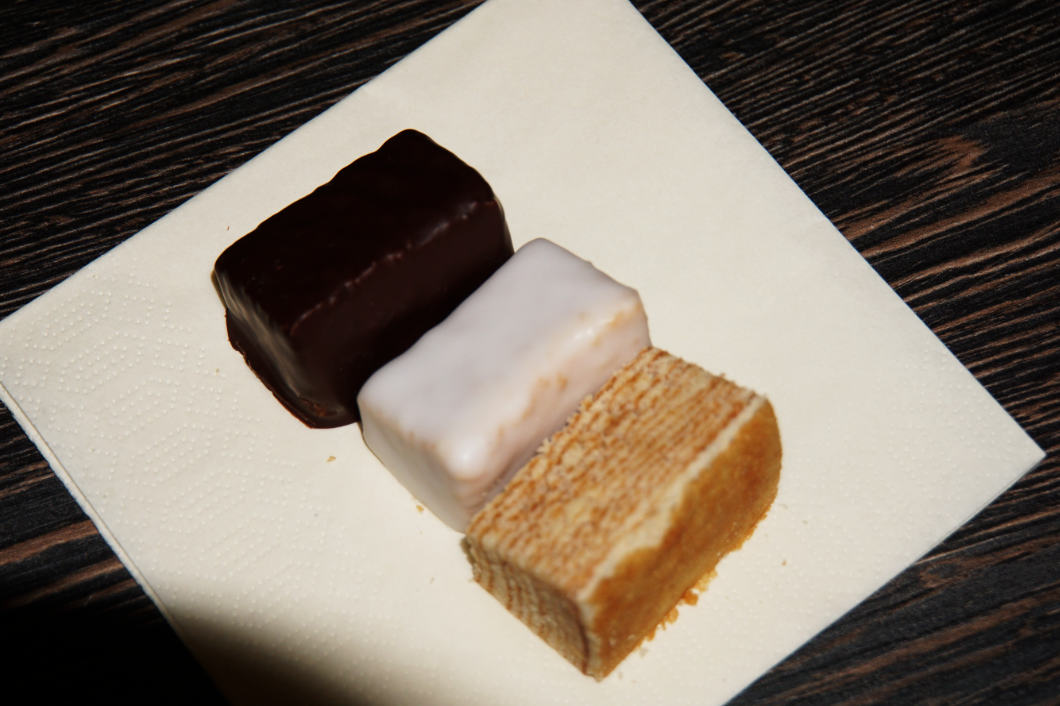
First, a little about the history of Cottbus Baumkuchen. In 1819, the first Baumkuchen was baked in Maria Groch’s bakery. At that time, one layer of dough after the other was spread over an open flame on a rotating roller. The pastry was shaped with a wooden comb and finally covered with a glaze of sugar and lemon.
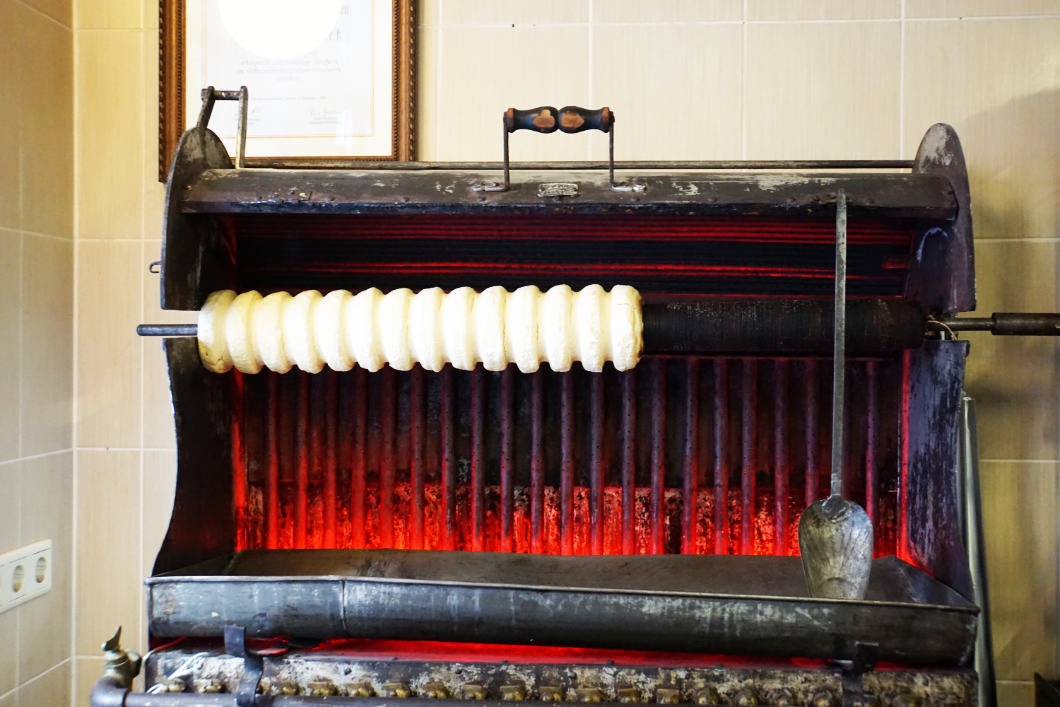
The first Cottbus Baumkuchen was created. In the course of the years, a number of fan factories were founded that produced Baumkuchen in Cottbus. By 1900, about 20 companies were located in the Cottbus area.
Baumkuchen was known far beyond the borders of Germany. The Baumkuchen made by Max Lauterbach, the founder of the conditorei Lauterbauch, were also among the coveted pastries.
During the GDR era, the production of Baumkuchen in Cottbus almost ceased. It was not until after the fall of the Wall that production began again. The Cottbus Baumkuchen Manufaktur was founded, which is also a registered trademark. Today, about 6.5 tonnes of Baumkuchen are produced annually and sold mainly online.
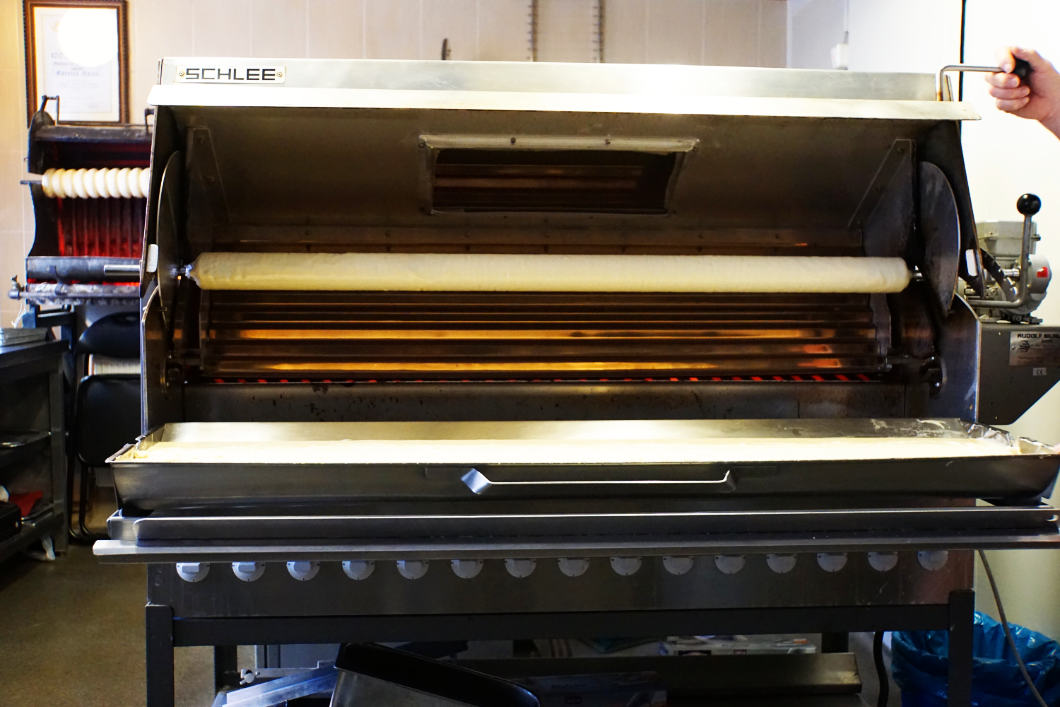
While we listened to the story of the Cottbus Baumkuchen Manufaktur, an insanely good-smelling Baumkuchen was created before our eyes. A good 5 kilograms of Baumkuchen mass was baked before our eyes on a 1.2 metre long pole.
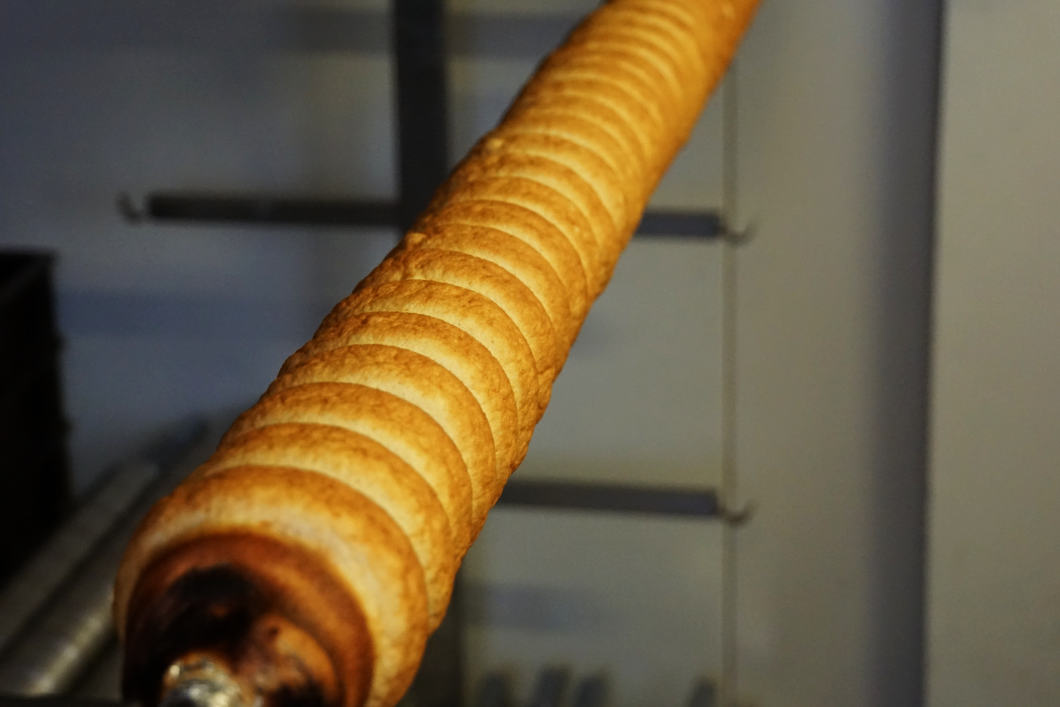
Layer by layer, the mixture was applied and then baked at about 220 degrees for 2-3 minutes. About 13-15 layers had to be applied before the Baumkuchen was ready.
It smelled better from layer to layer and the Baumkuchen grew before our eyes. So that it would later have the typical grooved shape, grooves were regularly drawn into the mass with a huge comb.
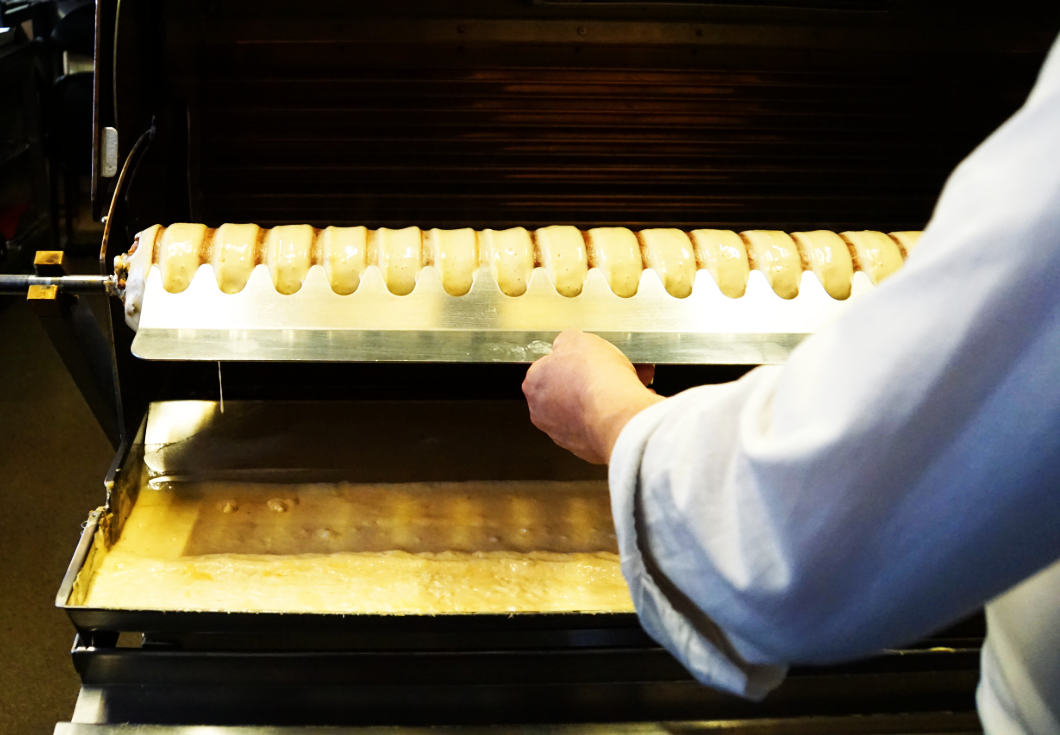
After a little more than 30 minutes, the Baumkuchen blank was baked. Now it has to cool down for one night before it can be coated. Then the Baumkuchen is portioned and shipped.
Watching makes you hungry. It was good that we were given small samples to try. I liked the Baumkuchen with the white fondant coating best. I took a Baumkuchen with a plain coating from the neighbouring bakery. Unfortunately, it didn’t survive the next few days – it was just too good!
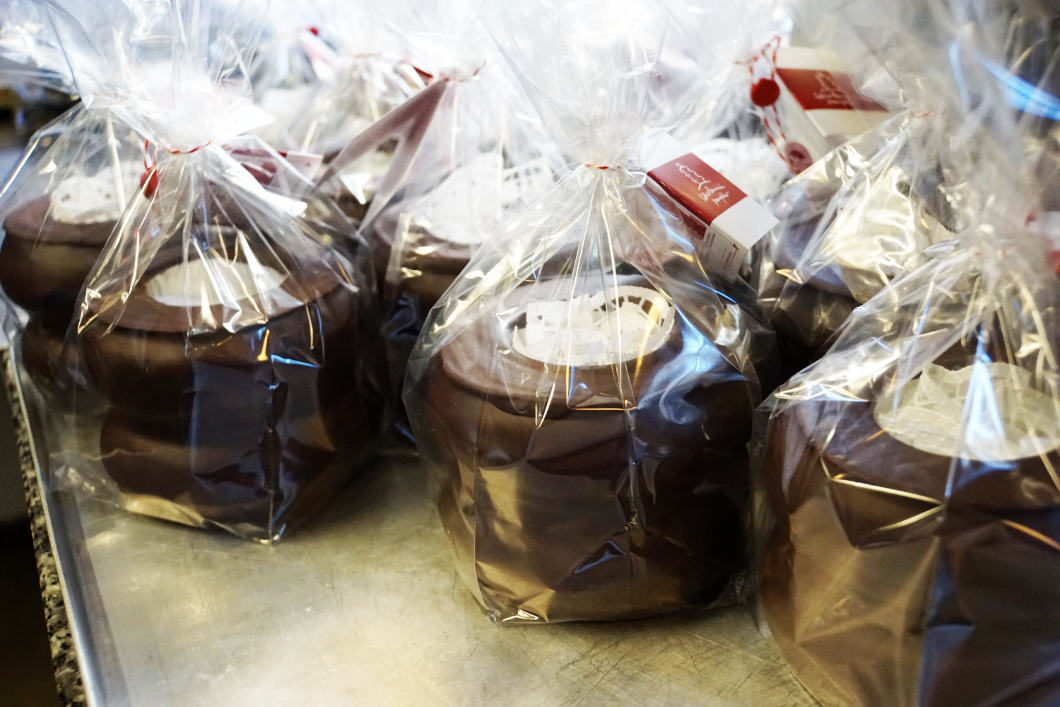
If you would like more detailed information, it is best to visit the website of the Cottbuser Baumkuchen Manufaktur.
Eating in the Spreewald: Gasthaus Schillebold
In Peitz you will find the Gasthaus Schillebold. A beautifully laid table awaited us, which already made us look forward to the meal.
I’ll say it right away: if you eat here, you certainly won’t go home hungry. As a starter, we got a Hokkaido soup with tofu. The soup was creamy and I liked it very much.
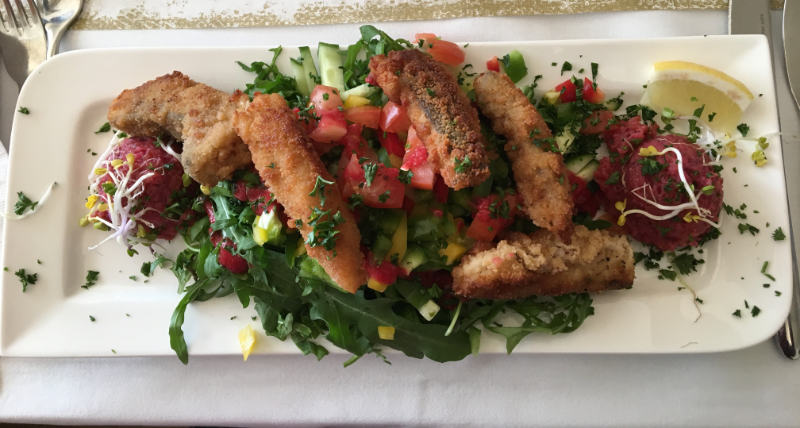
For the main course, we were served pickled fish (carp) with beetroot mousse on a bed of salad. Those who didn’t like fish got tofu in deep-fried potato noodles instead.
In my opinion, you should definitely eat carp when you are in Peitz. There are many carp ponds here and the fish is freshly caught. The fish was really tasty and I thought the beetroot mousse was sensationally good. The portion was unfortunately far too big for my eating habits, but I know I’m not a yardstick as I always eat quite little.
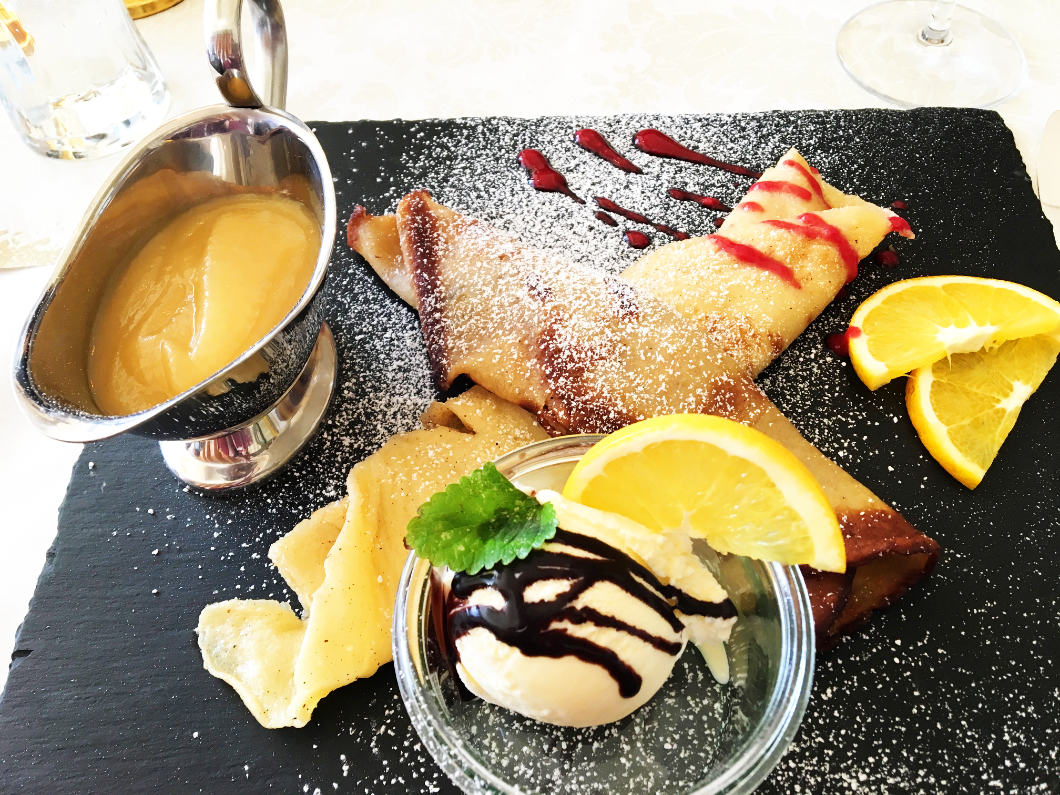
Dessert was the final crowning glory. We had pancakes with apple sauce and vanilla ice cream. Even though I thought I would never have to eat anything again because I was so full, the dessert proved me wrong. The ice cream was delicious and the pineapple pure or with applesauce or ice cream topping was just great. It’s amazing that suddenly there was still room in my stomach.
I liked it at the Schillebold restaurant.
Clamp cake from Peitz
Do you know clamp cake? It didn’t say anything to me, so I did some research first.
Klemmkuchen is also often called Rollkuchen or Eiserkuchen. It is traditionally baked over an open fire and was originally eaten at Carnival.
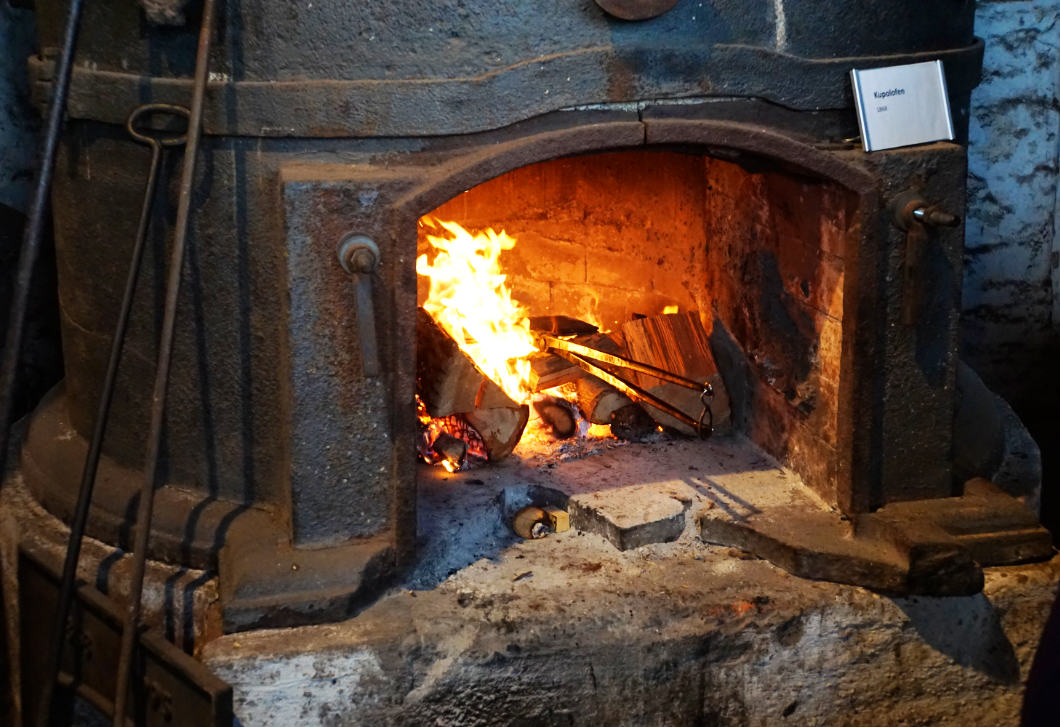
At Peitzer Eisenhütten- und Fischereimuseum we could watch the baking of the Klemmkuchen and of course try it afterwards.
The dough was already prepared and the recipe was also available:
- 1 kg flour
- 250 g magarine
- 4 eggs
- 250 g currants
- 250 ml milk
- 2 pts. baking powder
- 250 g bacon or ham cubes
We were told that this was a possible recipe and that there were other variations as well.
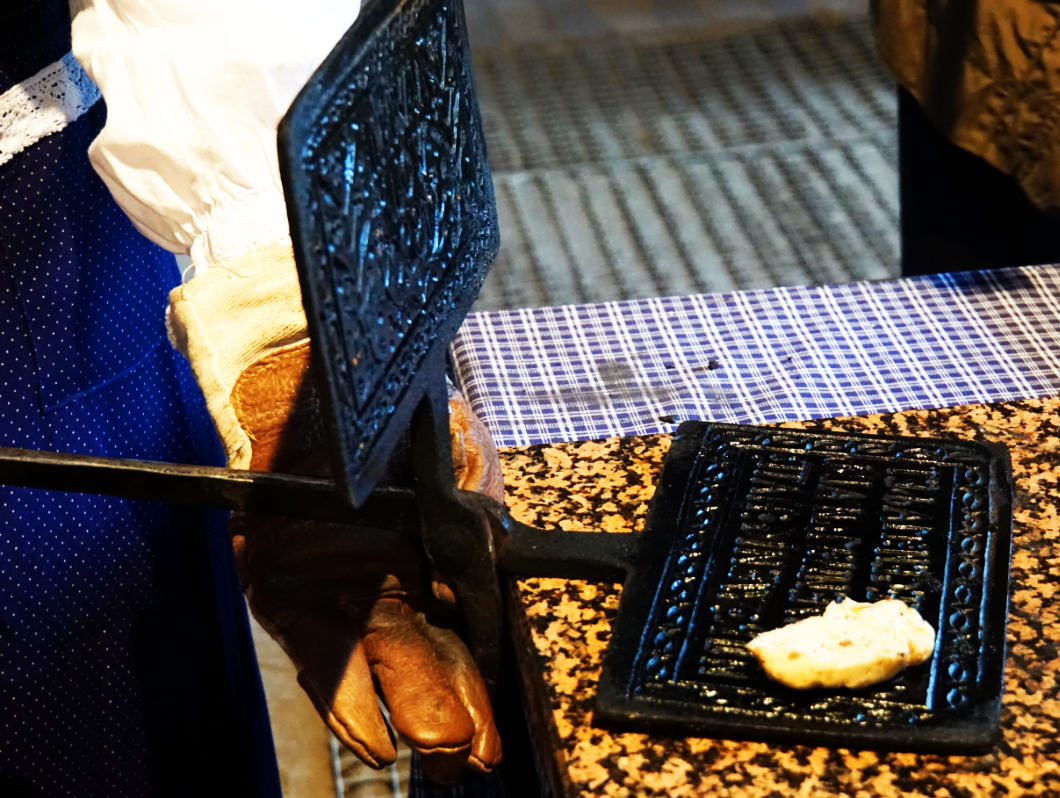
For baking, you heat an iron in an open fire. It takes a good sense to figure out when the iron is at the right temperature. After all, every fire burns differently and the temperature is never even. The iron is very special. It has been individually made and patterned. Therefore, each clamp iron looks different and gives the clamp cake the individual design.
After the iron has reached the right temperature, the viscous dough is placed on the clamp iron. After closing the iron is again held in the open fire and now you have to trust your feeling again until the finished clamp cake can be removed from the fire.
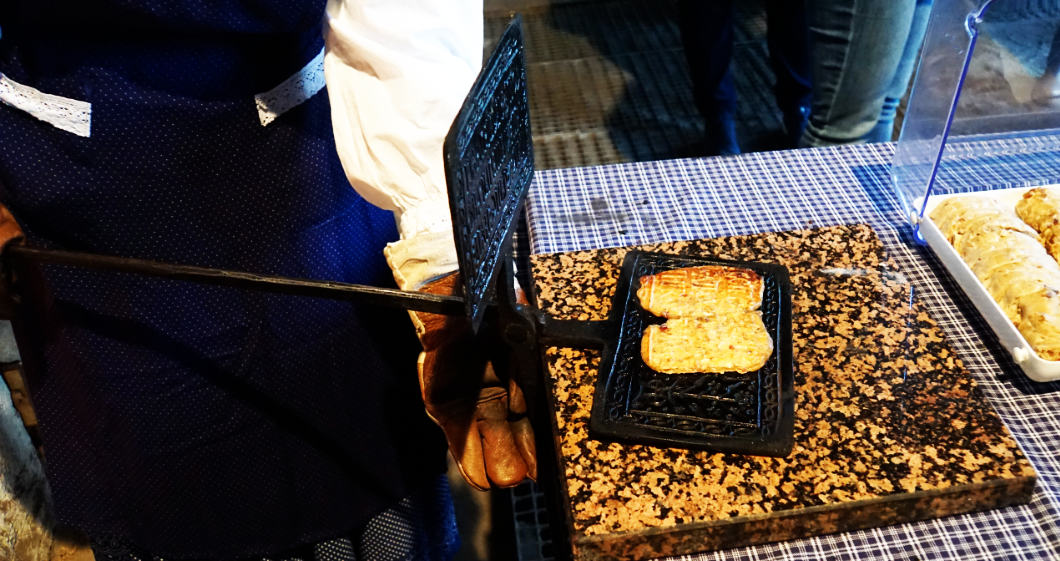
I tried a piece of clamp cake, of course. It was savory, tasted like bacon and a little smoky. I really liked that the cake was not sweet – I liked it!
Kulinarium Cottbus Branitz
Our dinner took us to the Kulinarium. In addition to the restaurant, you can also take part in cooking classes or do some sports on a bowling alley. Unfortunately, it was already so late that it was no longer possible to explore the grounds.
A lovely table awaited us in a separate room, so that we could have a good chat. As a starter, we were served a “Winter black salsify soup with roasted pumpkin seed oil”, which was very creamy and rich. For me, it could have had a bit more “oomph”, but it still tasted good.
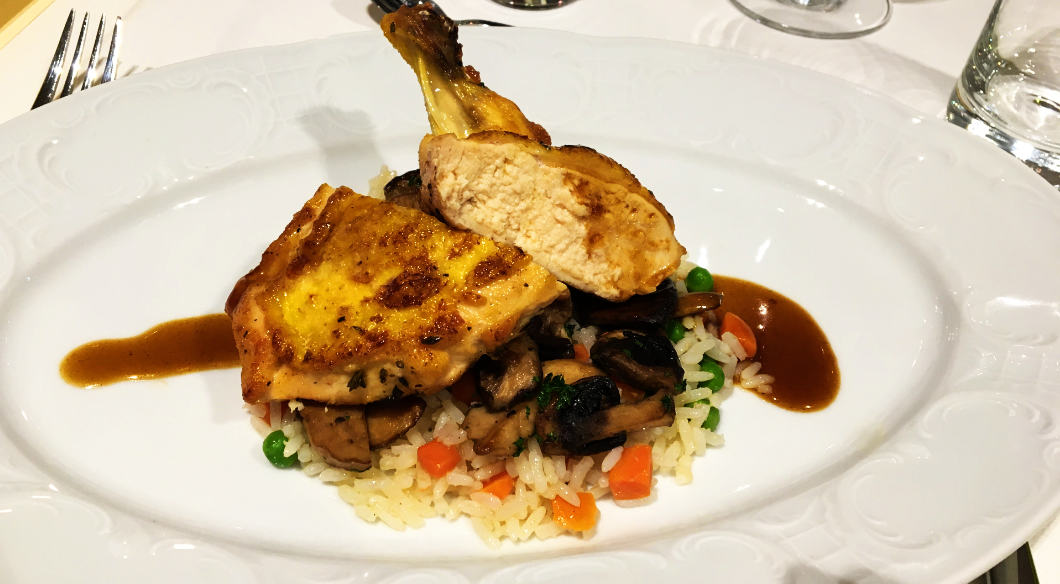
The main course consisted of a roasted corn poulard on mushroom ragout, colourful rice and some truffle jus. The chicken was tender and the skin really tasty.
For dessert, we were served yoghurt mousse with pineapple ragout.
I enjoyed it.
Confectionery Klinkmüller in Luckau
From a culinary point of view, our second day in the Spreewald followed on almost seamlessly from the previous day. In Luckau, we visited the Klinkmüller pastry shop. We were greeted personally by the boss and master confectioner René Klinkmüller, who tempted us with his delicious creations.
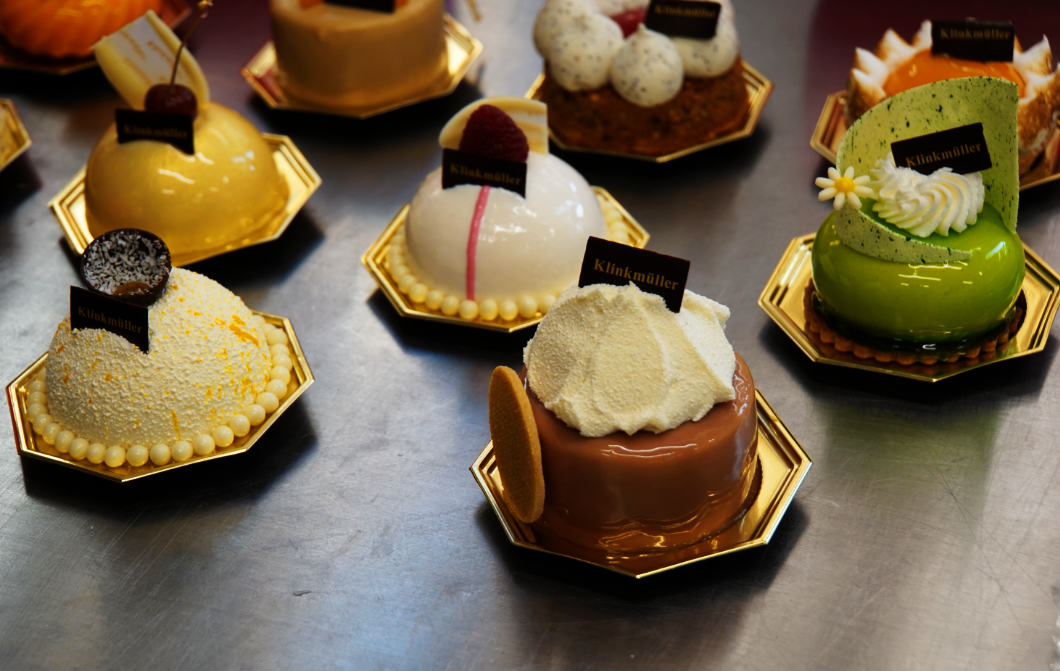
The confectionery has been in Luckau since 1983. In the beginning, the focus was still on bakery, but today the confectionery dominates the business. With his often unusual creations, René Klinkmüller has ensured that his products are known far beyond the region. He likes to pass on his knowledge in seminars.
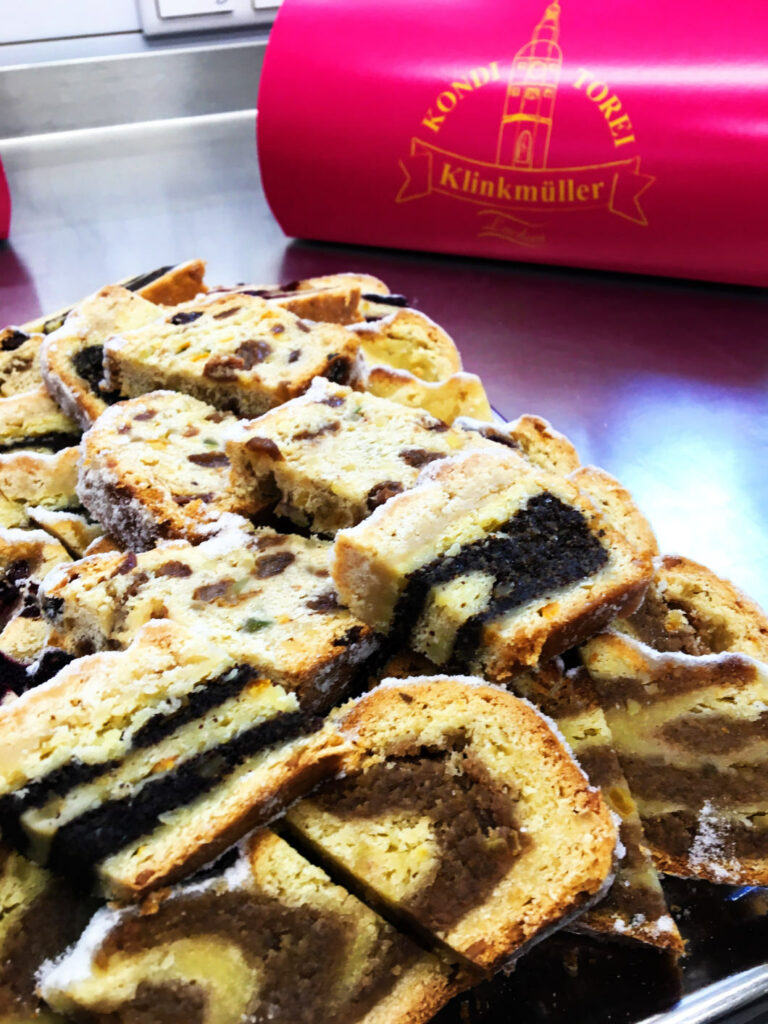
A selection of the latest products was waiting for us that morning. In addition to many different stollen varieties (cranberry stollen, elderberry and tonka bean stollen, poppy seed stollen…), we were tempted by small tartlets such as raspberry-lavender or coconut.
Almost too good to eat, but we wanted to try them. The tartlets were really delicious. You could taste the individual components, they were light and flattered the taste buds.
My favourite, however, was the Stollen. I love Stollen, but I rarely buy them. The ready-made Stollen in the supermarkets all taste similar, so eating them is often no fun. The Stollen from the Klinkmüller confectionery are completely different. I really tried every flavour that was presented to us, and every Stollen tasted different. The dough was aromatic, airy and fresh. You could taste the ingredients, it was a treat for the palate and the soul.
Website: Konditorei Klinkmüller.
Spreewald specialities
Peitzer Festungsbräu
A drinkable and tasty beer that has only been around since the beginning of 2018. It is brewed in Görlitz and was served for the first time at the Peitzer Frühlingsfest. We like the strong beer very much.
Gherkins and more gherkins
When you hear Spreewald, you also think of gherkins. Of course, eating gherkins is almost a must. Whether on an evening trip in a camel punt or on a Wendish farm, we were able to taste a wide variety of gherkins: Spicy gherkins, mustard gherkins, garlic gherkins, sour gherkins…. Not all varieties met my taste, but most of the cucumbers tasted quite good to me. I think next year I will pickle cucumbers too….
Lap/liqueur
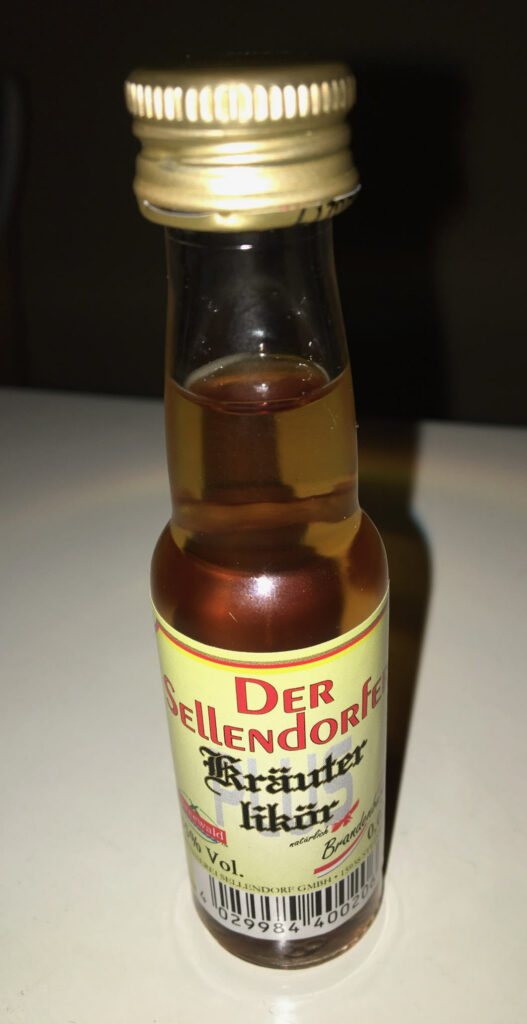
Kräuterschnaps 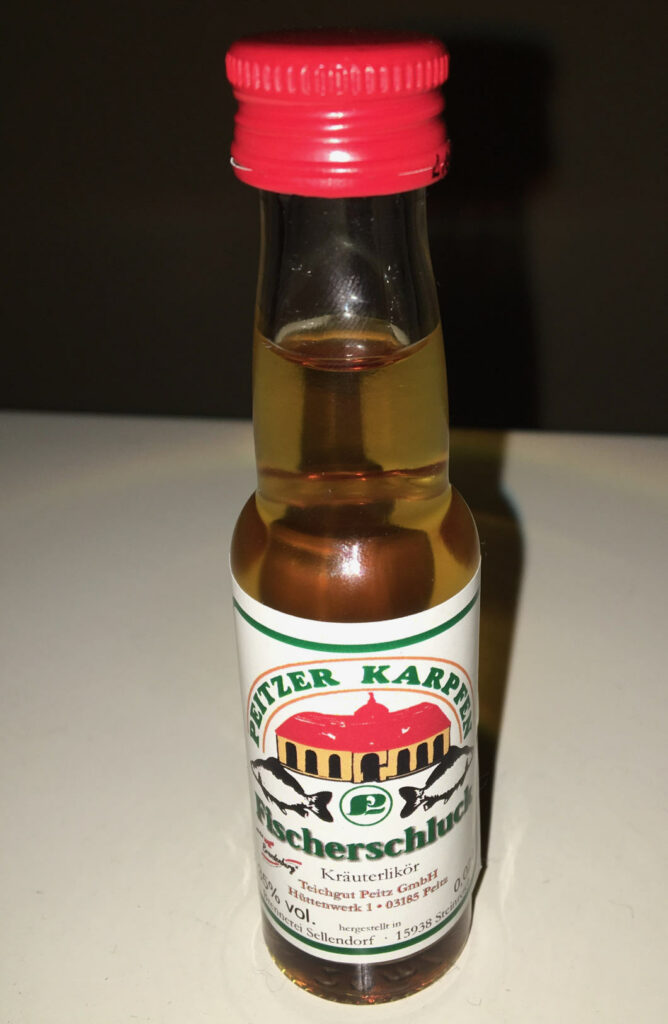
Fischerschluck
Disclosure: I was on a blogger trip to the Spreewald. The products presented here were part of the blogger trip. The article was written independently and contains only my own opinion.
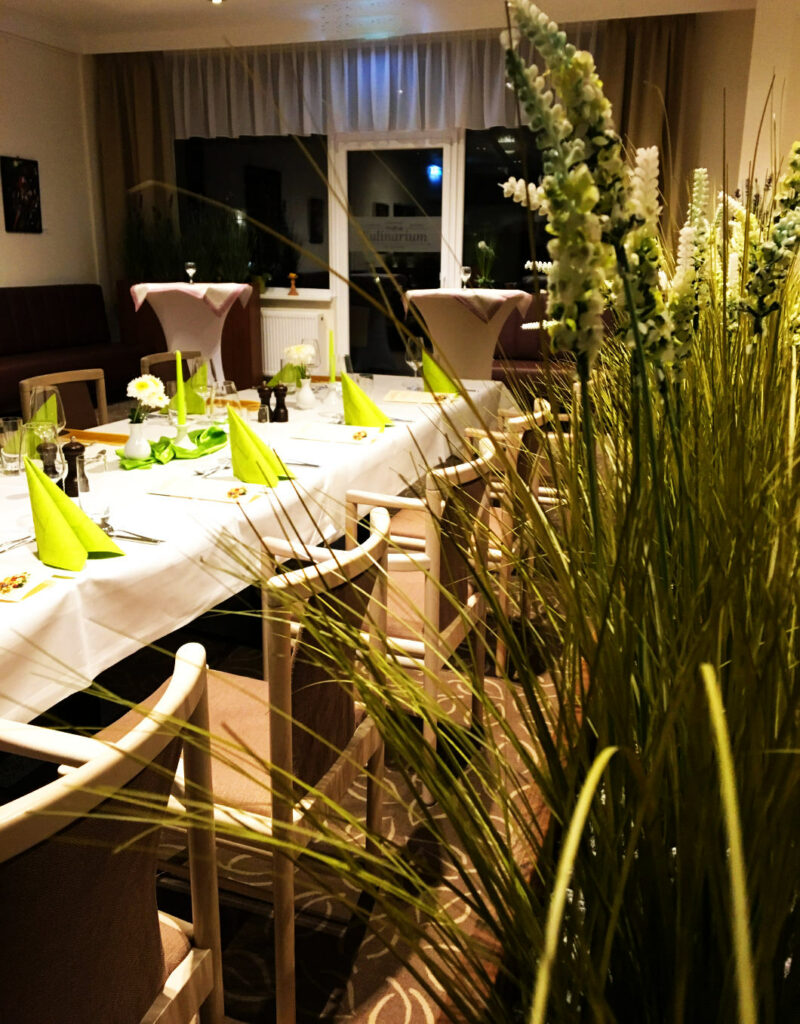
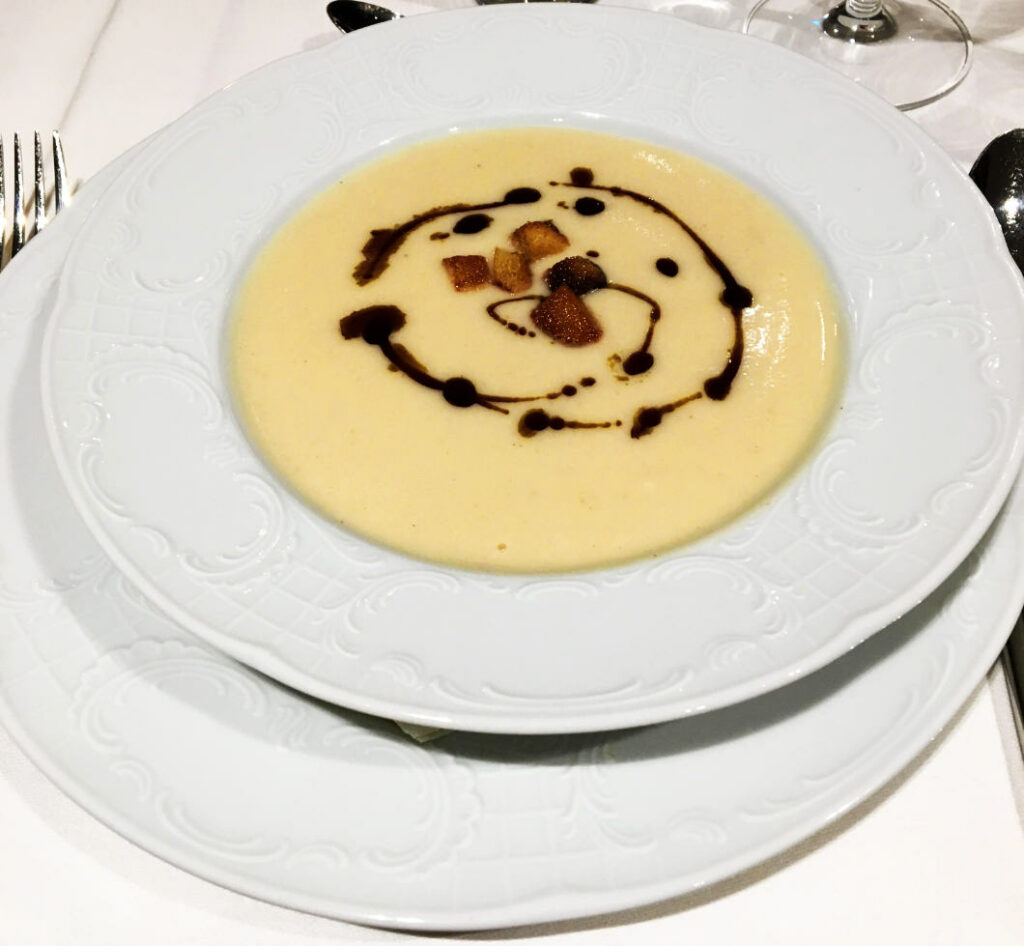
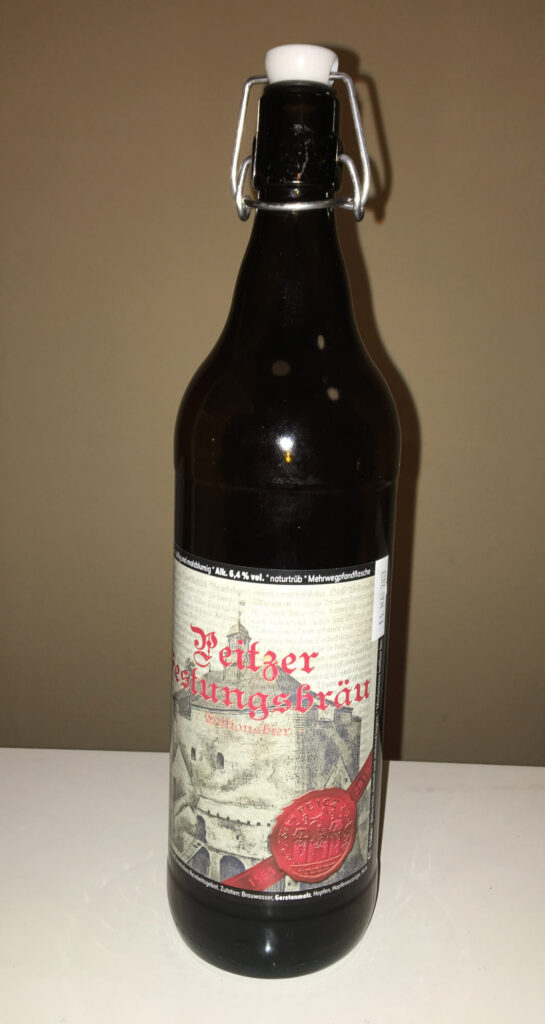
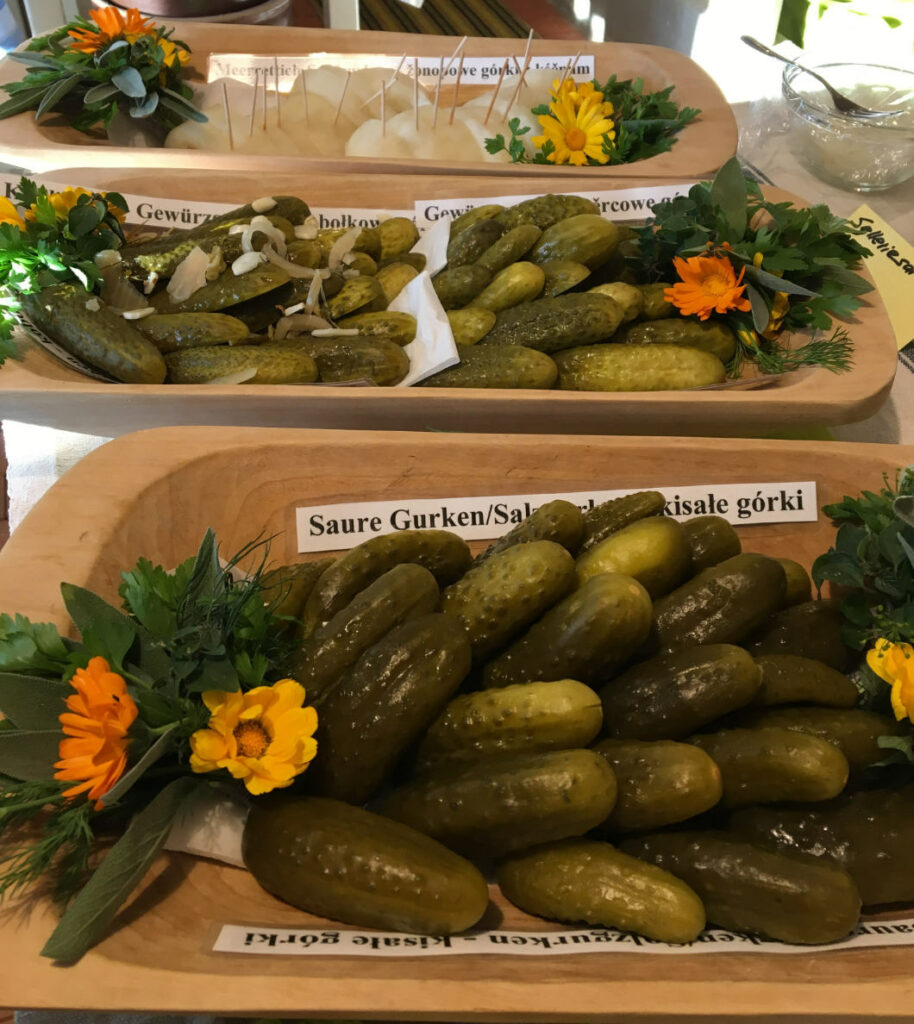



Leave a Reply